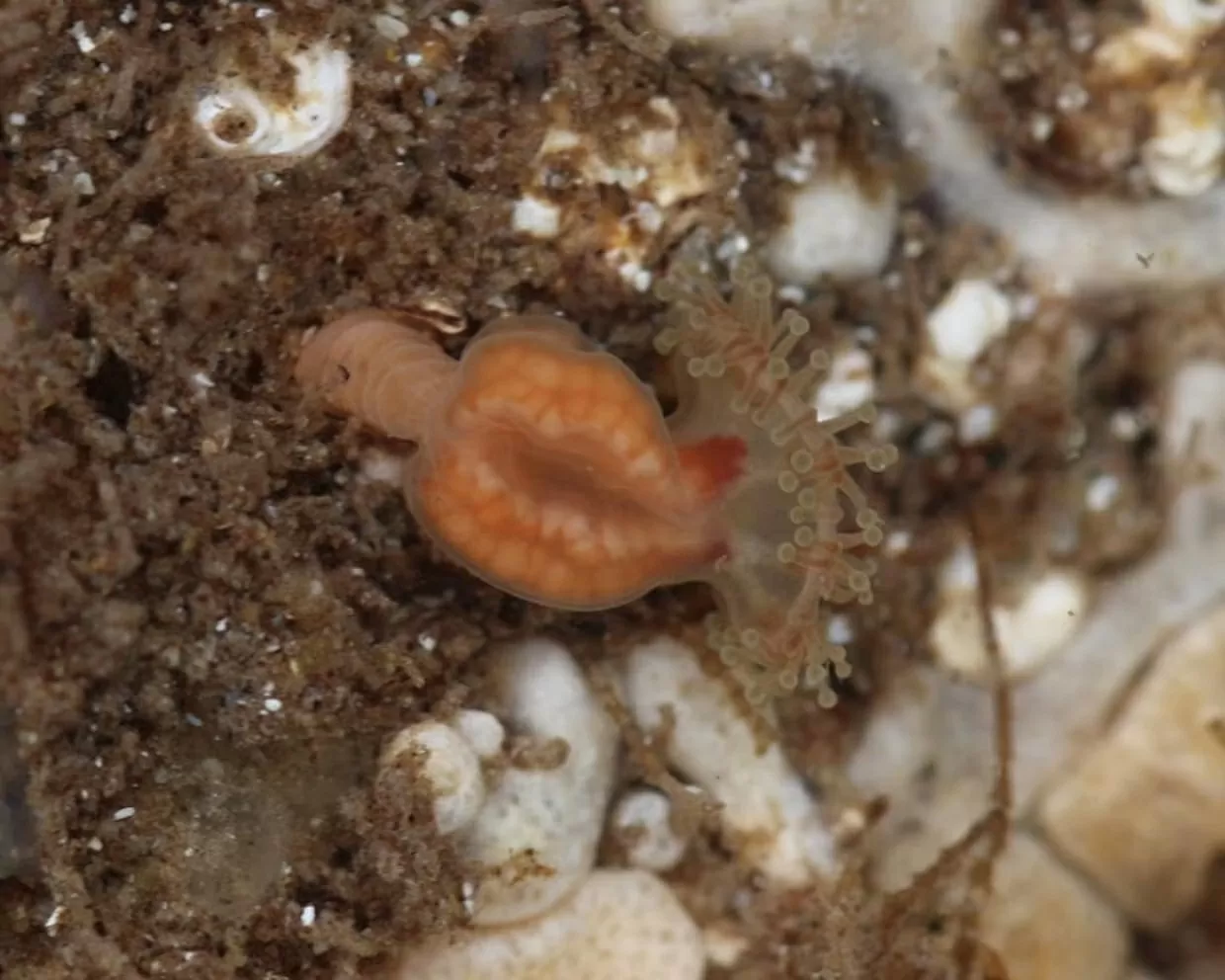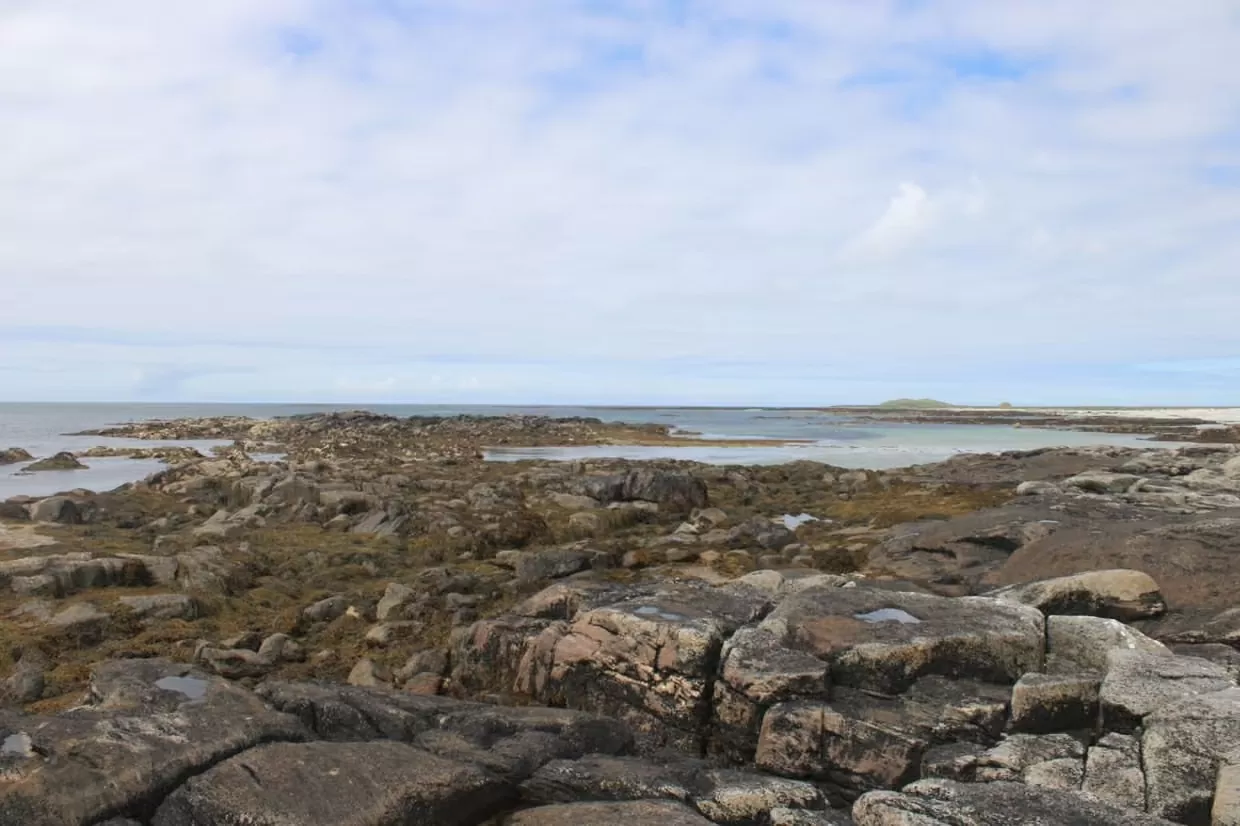 |
| Depastrum cyathiforme, a jellyfish species once known from ancient paintings, has now been recorded in the real world in the Outer Hebrides of Scotland, UK. (Photo: Guy Freeman) |
For decades, the tiny, thistle-like stemmed jellyfish Depastrum cyathiforme was confined to 19th-century drawings and illustrations. Last recorded in 1976 in Roscoff, northern France, scientists believed the creature was completely extinct.
However, a surprising discovery during a recent summer vacation in South Uist, one of the remote islands in the Outer Hebrides (Scotland, UK) changed that perception.
While exploring the coastal rock pools, a tourist stumbled upon four small creatures clinging to the rocks, resembling sea anemones, and immediately took pictures. Remarkably, these photos match almost exactly the classic pen and watercolor drawings of Depastrum cyathiforme.
Discoverer Neil Roberts said he was initially “a little skeptical” when he looked up information online, but the more he compared the images, the more obvious the resemblance became. “I was really pleased when the experts confirmed that the photo I took was of a long-forgotten jellyfish,” he added.
The discovery, published in the journal British Wildlife , was confirmed by further field surveys. The search resulted in the identification of another Depastrum cyathiforme, raising hopes that the species, thought to be extinct, may still exist in its limited range around South Uist.
British Wildlife editor Guy Freeman, who was on a survey in South Uist this summer, confirmed the presence of at least one Depastrum cyathiforme in the area.
“When Neil first shared the images, it was like seeing a ghost,” says Freeman. “What we thought only existed in old sketchbooks was now brought to life before our eyes. It was magical.”
The next step, according to Freeman, will be to expand the survey to determine whether Depastrum cyathiforme is still present in areas other than South Uist.
 |
| The area where Neil Roberts discovered the Depastrum cyathiforme jellyfish. (Source: British Wildlife) |
In the 19th century, this jellyfish was recorded in the South West of England and was nicknamed “goblet lucernaria” by the famous marine biologist Philip Henry Gosse. The last recorded sighting in the UK was in 1954, in Lundy, Devon, before it completely disappeared from the scientific record.
Depastrum cyathiforme is a member of the group of pedunculated jellyfish, closely related to jellyfish, sea anemones and corals, usually less than 5cm tall and using suction cups to cling to rocks or seaweed. Globally, science has only recorded about 50 species of pedunculated jellyfish, of which 10 species live in the waters of the UK and Ireland.
Allen Collins, a leading expert on stemmed jellyfish at the Smithsonian Institution in Washington DC, said the discovery was a major one. “I’m really happy to hear about it. Now we can be sure that this rare species still exists. Hopefully, more individuals will be discovered in the future,” he said.
Locally, Christine from the Outer Hebrides Biological Records Centre said: “We are always excited when a new species is recorded on the island. But it is not every day that we are able to confirm a species that was previously thought to be extinct. This is a fantastic example of the role that local naturalists play in enriching our understanding of biodiversity in the Outer Hebrides and the UK as a whole.”
This surprising discovery is not only good news for scientists, but also emphasizes the importance of preserving natural ecosystems, where rare creatures can quietly exist and wait to be found again.
Source: https://baoquocte.vn/du-khach-phat-hien-loai-sua-tuyet-chung-tai-vung-bien-scotland-anh-323200.html




































































































Comment (0)